Related Research Articles

The Bristol Aeroplane Company, originally the British and Colonial Aeroplane Company, was both one of the first and one of the most important British aviation companies, designing and manufacturing both airframes and aircraft engines. Notable aircraft produced by the company include the 'Boxkite', the Bristol Fighter, the Bulldog, the Blenheim, the Beaufighter, and the Britannia, and much of the preliminary work which led to Concorde was carried out by the company. In 1956 its major operations were split into Bristol Aircraft and Bristol Aero Engines. In 1959, Bristol Aircraft merged with several major British aircraft companies to form the British Aircraft Corporation (BAC) and Bristol Aero Engines merged with Armstrong Siddeley to form Bristol Siddeley.
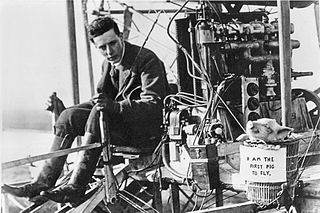
This is a list of aviation-related events from 1909:
Beagle Aircraft Limited was a British light aircraft manufacturer. The company produced the Airedale, Terrier, Beagle 206, Husky and the Pup. It had factories at Rearsby in Leicestershire and Shoreham in Sussex. The company was dissolved in 1969.

The Fokker E.I was the first fighter aircraft to enter service with the Fliegertruppe of the Deutsches Heer in World War I. Its arrival at the front in mid-1915 marked the start of a period known as the "Fokker Scourge" during which the E.I and its successors achieved a measure of air superiority over the Western Front.

Waldo Dean Waterman was an inventor and aviation pioneer from San Diego, California. He developed a series of tailless swept-wing aircraft incorporating tricycle landing gear, culminating in a low-cost and simple-to-fly flying car.

Early flying machines include all forms of aircraft studied or constructed before the development of the modern aeroplane by 1910. The story of modern flight begins more than a century before the first successful manned aeroplane, and the earliest aircraft thousands of years before.
Romania has a rich tradition in aviation. At the beginning of the 20th century, pioneers such as Henri Coandă, Aurel Vlaicu, Traian Vuia and George Valentin Bibescu made important contributions to early aviation history, building revolutionary airplanes and contributing to the international scene.

Édouard de Niéport, usually known as Édouard Nieuport (1875–1911) was the co-founder with his brother Charles of the eponymous Nieuport aircraft manufacturing company, Société Anonyme Des Établissements Nieuport, formed in 1909 at Issy-les-Moulineaux. An engineer and sportsman, Édouard was also one of the pre-eminent aeroplane designers and pilots of the early aviation era . As a pilot, he set a new world speed record of 74.37 miles per hour (119.69 km/h) on 11 May 1911 at Mourmelon, flying his Nieuport II monoplane, powered by a 28 horsepower (21 kW) engine of his own design. Later that year at Châlons, he bettered this time with a new record of 82.73 miles per hour (133.14 km/h). Racing for the Gordon Bennett Trophy in July at Eastchurch, he finished third, beaten for first place by one of his own aircraft, flown by the American pilot C. T. Weymann.

Giuseppe Mario Bellanca was an Italian-American aviation pioneer, airplane designer and builder, who is credited with many design firsts and whose aircraft broke many aviation records. He was inducted into the National Aviation Hall of Fame in 1973. The Bellanca C.F., one of the world's first enclosed-cabin monoplanes, is on display at the National Air and Space Museum. Bellanca was known mostly for his long range aircraft which led the way for the advancement of international and commercial air transportation.
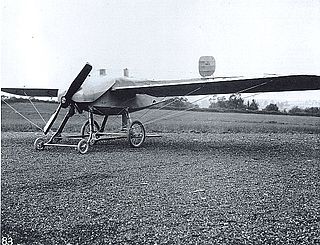
The Bristol Coanda Monoplanes were a series of monoplane trainers designed by the Romanian designer Henri Coandă for the British company British and Colonial Aeroplane Company.

The Bristol Prier monoplane was an early British aircraft produced in a number of single- and two-seat versions.
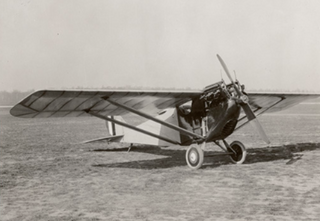
The Loening M-8 was a 1910s American fighter monoplane designed by Grover Loening and built by his Loening Aeronautical Engineering Company. The order for 5000 for the United States Army Air Corps was canceled when the First World War ended.

The Maule M-4 is an American four-seat cabin monoplane designed by Belford Maule and built by the Maule Aircraft Company.
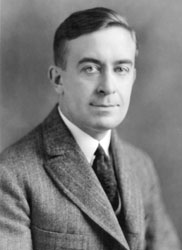
Alfred Victor Verville was an American aviation pioneer and aircraft designer who contributed to civilian and military aviation. During his forty-seven years in the aviation industry, he was responsible for the design and development of nearly twenty commercial and military airplanes. Verville is known for designing flying boats, military racing airplanes, and a series of commercial cabin airplanes. His planes were awarded with the Pulitzer Speed Classic Trophy in 1920 and 1924.

The Nieuport IV was a French-built sporting, training and reconnaissance monoplane of the early 1910s.

The Cody V was a single-engined biplane built by the British-based American aviation pioneer Samuel Franklin Cody in 1912. It was built from the remains of two of Cody's earlier aircraft, and won the 1912 British Military Aeroplane Competition, with two aircraft being purchased for the Royal Flying Corps. The design was abandoned after the mid-air disintegration of one of the aircraft in April 1913.

The Cody IV monoplane was a single-engined monoplane designed and built by the American-born but British-based aviation pioneer Samuel Franklin Cody in 1912. It was intended for entry into the 1912 British Military Aeroplane Competition, but was wrecked in a crash before the start of the competition.
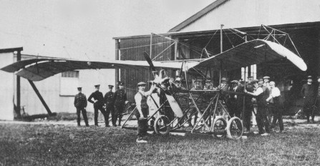
The Dunne D.7 was one of J. W. Dunne's swept wing tailless aircraft designed to have automatic stability, first flying in 1911. It was a single seat, single engined pusher monoplane developed from the unsuccessful D.6.

The pioneer era of aviation was the period of aviation history between the first successful powered flight, generally accepted to have been made by the Wright Brothers on 17 December 1903, and the outbreak of the First World War in August 1914.